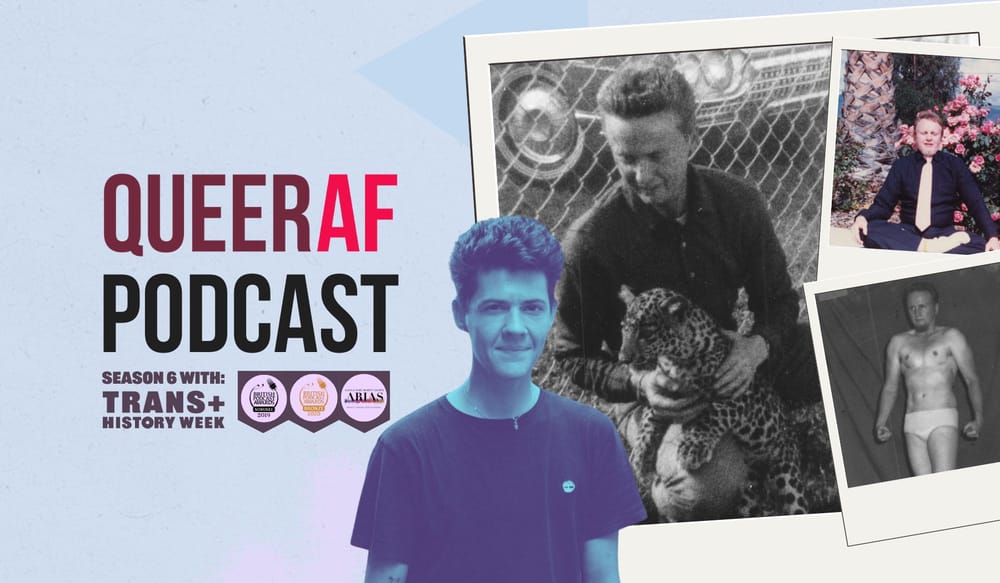
Hijra are transgender, intersex, or eunuch people who live in unique communities and are neither completely male nor female an identity. The origin of the Hijras identity is featured with ancient Hinduism in ancient Hinduism. Learning about them helped Alex Parmar-Yee feel that being trans and Indian is enduring. This article was produced as official content for the first ever Trans+ History Week, one of QueerAF's launchpad projects.
‘People like me aren’t transgender, right?’ This is a question that I and many trans folks have asked ourselves as we have begun exploring our identities.
However, “people like me” can mean different things for each individual. It might refer to an individual’s experience of dysphoria, their hobbies, or their friends.
For me it was my ethnicity. Although born in London, I’m a second generation immigrant of Chinese and Indian heritage, and growing up in the ‘90s and ‘00s meant that the representation of transgender people and LGBTQIA+ people in general that I saw tended to be controversial. Moreover, those people were usually white.
As I began to scratch the surface of transness online in my 20s, I saw the trans community indeed appeared to be mostly white folks.
As I got deeper I discovered more about Black trans pioneers, but I didn’t encounter many brown, South Asian trans siblings. Perhaps, I thought, being born and raised British had allowed me to assimilate with identities which aren’t for people like me?
Exploring my gender, and my history
As my initial gender exploration and experimentation ended and I became more confident as a non-binary trans feminine individual, I sought more information on trans people throughout history. I fell down an internet research rabbit hole, and ended up on a page which surprised me.
I learned about the Hijra of the Indian subcontinent. Hijra are transgender, intersex, or eunuch people who live in unique communities and are neither completely male nor female. The origin of the Hijras identity is featured with ancient Hinduism - Harvard Dignity School
I had felt like an outlier, both as a person of Indian descent and as a trans person, yet it turned out that I was expressing myself in a way that would have been familiar to my ancestors.
The Hijras, also known as aravani, aruvani, jogappa or khawaja sira, are a transgender identity that have a recorded history going back over 4,000 years - AnnaLofi
Not all Hijras are necessarily Hindu, but this so-called “third gender” has been referenced in ancient hindu texts like the Kama Sutra - Washington University Global Studies Law Review
The community, which is made up of trans feminine and intersex individuals, would often hold significant roles and be invited to give religious blessings - Oxford Student
It may surprise those that feel religion and transgender people aren’t compatible, that within Hinduism there are even stories of transgender individuals and gods in some of the most important texts.

🎨 Artwork description, by Sally Chen
"A digital illustration of Mohini, Krishna’s female avatar that gave way to the existence of hijras, standing in the middle of a group of modern day hijras. I was inspired by Alex’s beautifully written article and the documentaries she sent my way to depict Mohini and hijras carrying themselves unapologetically, with the grace, dignity, and divinity they were afforded before westernization and colonization. I hope that our collaboration makes people rethink just how long transness has existed, been celebrated, and had iterations across the globe, even if post-colonial records of history will tell you otherwise."
Within the Mahābhārata, one of the two major ancient Hindu texts, the story of Aravan is seen as the origin of the Hijras’ transgender identities - National Library of Medicine
In the story Krishna, one of the major Hindu gods, advised Arjuna that his son, Aravan, must sacrifice himself as part of a ritual to win a war.
Aravan agrees, providing that conditions are met, one of them being that he did not wish to die an unmarried man.
Krishna sought a wife for Aravan, but no woman wished to become a widow.
Instead, Krishna decided to take on their female form, known as Mohini, to marry Aravan and become his widow.
Krishna’s transformation is said to be the origin of trans people. As a result many Hijras worship Aravan - this is the origin of the term Aravani.
There are other stories throughout Hinduism which feature gods taking on other genders and teachings on gender being a human construct, like the story of Shikhandi - which is featured in the Trans+ History Week workbook.
I think this rich history of what may be one of the oldest recorded trans communities in the world is a real lesson that trans people are nothing new and have always been here.
It shows us that if we go far enough back, we’re present in the myths and stories that form the ancient foundations of our civilizations.
For me and my trans south Asian siblings this also proves wrong those within our own communities who feel we ‘learned’ to be trans from Western culture.
Armed with my knowledge of the Hijras, I asked relatives about them. They knew of them, but their understanding was that they were looked down upon within society in India.
Looking into it myself I heard that many Hijras face discrimination and stigma, and rely on sex work and begging to live - The Guardian
Much of this is a legacy of British colonialism, which saw them as a “breach of public decency”. Laws such as the only recently repealed anti-homosexuality act Section 377 and numerous specifically anti-Hijra laws lead to their further marginalisation - LSE
There have been changes to laws in post-colonial India, including legal recognition of a third gender in some documents. Some Hindi Hijra communities are respected for the blessings they can provide, or their roles as dancers or religious figures in ceremonies - First Post
That being said, many Hijra are still forced to live as outcasts within Indian society, a common experience for trans people globally.
So looking at my world as a trans person of Indian descent, does that make me a Hijra?
What can we learn from this history?
I wouldn’t consider myself a practising Hindu, and I don’t think I’d be good at providing blessings or dancing at religious festivals.
But the thing is, the Hijras’ way of life is just a flavour of being trans, one that has stood the test of time. For all trans people, the Hijras perhaps allow us to see parallels in aspects of our own trans experience.
One thing that struck me in learning more about the Hijras is the units they all lived within, sisters and aunties supporting each other in becoming their authentic selves and navigating society. In the west, the term ‘found family’ feels like the right label for this - The Wire
I think back to the communities I joined on Instagram that supported each other in gender expression.
Even today, I rely on close-knit group chats and queer picnics to remain connected with my trans siblings. Society will continue to evolve but many aspects that have been part of the Hijra way of life for thousands of years continue in our trans communities of today, around the world. History shows that these aspects echo throughout civilizations such as with the Gallae of ancient Rome - QueerAF (out tomorrow!)
The Hijras taught me that being trans and Indian is enduring. The Hijras can teach all trans people that their experiences are enduring. The Hijras can teach society that trans people are enduring.











